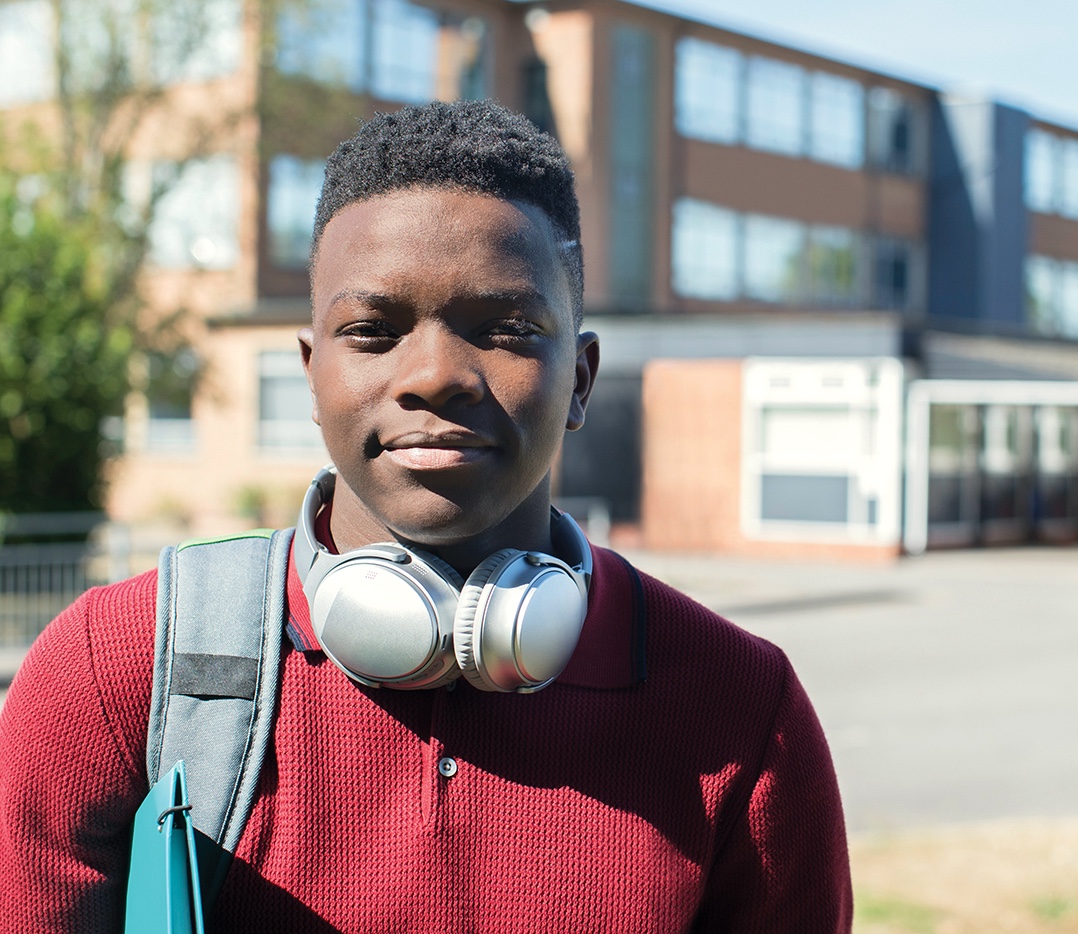AUTHORS: Scott Graves, Ph.D., & Yixi Wang, Ph.D.
Black men and boys have historically been viewed as older and more threatening than their white peers. Research shows that when Black and white male adults are objectively the same size, participants still rate Black males as being larger, more muscular, and more frightening than their white counterparts (Wilson et al., 2017).
Black boys are perceived as older and less innocent than their peers as early as the age of ten, and by the age of 13, many people consider them to be adults (Goff et al., 2014).
The Government Accountability Office of the United States found that the risk of expulsion or suspension for Black boys in schools was significantly higher than the risk for their white classmates (Nowicki, 2018).
The view that Black boys are older and more threatening can infiltrate early childhood learning settings and lead to stark racial injustices, even for preschool children.
Data show that 19% of preschoolers are Black boys, yet 45% of boys expelled from preschool are Black boys (U.S. Department of Education Office for Civil Rights, 2016), despite the fact that Black boys do not display a preponderance of misbehavior in comparison to their peers (e.g., Huang, 2018).
Black males are more likely to be suspended from school and receive fewer warnings and opportunities to modify their behavior.
Black males are frequently suspected of engaging in antisocial behavior and their behavior is frequently attributed to stable rather than variable causes (Graves & Aston, 2018), factors that may contribute to the disparities in expulsion and suspension rates.
These suspensions result in Black boys losing the most days due to suspension in secondary school, with 132 days of suspension per student enrolled (Losen & Martinez, 2020).

According to research, school belonging and self-esteem can be protective factors for Black teenagers (Gray et al., 2020).
School belonging was revealed to be a strong predictor of academic achievement among Black students (Hughes et al., 2015). Black youth’s school affiliation functions as a buffer against racial discrimination and the effects of stress on their academic productivity. Low levels of belongingness among Black boys were associated with elevated levels of worry and stress. Self-esteem has also been found to be related to social well-being, and self-esteem among Black youth is associated with positive mental health (Okeke-Adeyanju et al., 2018).
This research brief attempts to understand the relationship between body size and suspension rates for Black boys in grades 7-12. This brief also looks at how school belonging and self-esteem impacts students who have been suspended.
DATA & RESEARCH GOALS
Data for this project were derived from the National Longitudinal Study of Adolescent to Adult Health (Add Health), which is a nationally representative dataset of 90,000 students in grades 7-12. The first two waves of the Add Health dataset were used for this study. These waves placed a particular emphasis on aspects of children’s personalities, families, peer connections, schools, and communities that have the potential to have an impact on the students’ health and behavior risks. To be nationally representative all the analyses were weighted, the analyses controlled for students’ body mass index (using students’ weight and height) and family income (measured in thousands of dollars). Additionally, the constructs of self-esteem (sample item: “you feel loved and wanted”) and school belonging (sample item: “I feel like I am part of this school”) were included measured on a Likert scale.
These data were used to answer the following questions:
- What is the relationship between BMI and school suspension for Black boys?
- Is the relationship between BMI and school suspension moderated by school belonging and self-esteem for Black boys?
For this study, we looked at several factors: the students’ BMI as measured by interviewers from Add Health, their self-reported self-esteem, sense of belonging at school, and family income, as well as factors that could predict if a student might be suspended.
All analyses were weighted to ensure they were nationally representative of the population of youth in grades 7-12.


FINDINGS
The overall findings suggested that students with higher Body Mass Indexes (BMIs) and average levels of school belonging also have lower levels of self-esteem. Overall larger children had a higher risk of getting suspended.
The higher a student’s BMI, the greater the likelihood that a non-Black student with average school belonging will be suspended.
The results for Black males however differed from the overall sample. It was discovered that there is a substantial correlation between being a Black male and receiving a suspension from school, but that there is no significant correlation between Black boys’ BMI and suspension. This indicates that there is no discernible correlation between Black male students’ BMI and their suspension rate for those with typical levels of school belonging.
Also, non-Black adolescents reported larger moderating effects for both self-esteem and a sense of belonging at school than did Black adolescents. This indicates that school belonging and self-esteem both have a greater impact on modifying suspension risk for non-Black students than Black boys.
RECOMMENDATIONS
There are areas where future research is needed, but there are also actions that can be taken now by researchers, publishers, practitioners, school administrators, and policymakers to create more equitable experiences in school for Black boys.
Ensure research findings are disaggregated by race and gender. The results of this research demonstrated that population-level research results do not always apply to Black boys. Researchers and publishers should push for reporting results for different subgroups to elucidate potential group differences in effects.
Given that BMI was not related to suspension for Black boys, but it was for other boys in this sample, more research is recommended to understand the views of school-based practitioners as it relates to their decision-making process to recommend suspension for Black boys. Practitioners should be aware that Black boys are seen as demonstrating more problem behavior regardless of their size, even though, among other groups of students, larger boys are suspended more.
Continued research is needed on how the surroundings and atmosphere in schools affect teacher/student interactions. Practitioners and policymakers should help to design school environments that promote and provide Black boys the opportunity to develop and demonstrate typical childhood behaviors without the fear of suspension and expulsion.

Researchers and practitioners should focus more attention on biased perceptions of Black boys among teachers, administrators, and school psychologists. School-based professionals’ views of children form the first step in the process that leads to punishment and suspension. As such, decreasing biased views of Black boys may be a promising avenue to decrease suspension rates.
Policymakers should collect data on the race of teachers and consider efforts to increase the number of Black male teachers, as Black teachers have been shown to increase the academic achievement and improve the social emotional outcomes of Black children.


REFERENCES
Goff, P. A., Jackson, M. C., Di Leone, B. A. L., Culotta, C. M., & DiTomasso, N. A. (2014). The essence of innocence: Consequences of dehumanizing Black children. Journal of Personality and Social Psychology, 106(4), 526–545. https://doi.org/10.1037/a0035663
Graves, S. L., & Aston, C. (2018). A mixed-methods study of a social emotional curriculum for Black male success: A school-based pilot study of the brothers of Ujima. Psychology in the Schools, 55(1), 76–84. https://doi.org/10.1002/pits.22088
Gray, D. L., Hope, E. C., & Byrd, C. M. (2020). Why Black adolescents are vulnerable at school and how schools can provide opportunities to belong to fix it. Policy Insights from the Behavioral and Brain Sciences, 7(1), 3–9. https://doi.org/10.1177/2372732219868744
Huang, F. L. (2018). Do Black students misbehave more? Investigating the differential involvement hypothesis and out-of-school suspensions. The Journal of Educational Research, 111(3), 284–294. https://doi.org/10.1080/00220671.2016.1253538
Hughes, J. N., Im, M. H., & Allee, P. J. (2015). Effect of school belonging trajectories in grades 6-8 on achievement: Gender and ethnic differences. Journal of School Psychology, 53(6), 493–507. https://doi.org/10.1016/j.jsp.2015.08.001
Losen, D. J., & Martinez, P. (2020). Lost opportunities: How disparate school discipline continues to drive differences in the opportunity to learn. Learning Policy Institute; Center for Civil Rights Remedies at the Civil Rights Project, UCLA. http://www.schooldisciplinedata.org/ccrr/index.php
Nowicki, J. M. (2018). K-12 Education: Discipline disparities for Black Students, Boys, and students with disabilities. Report to congressional requesters. GAO-18-258. US Government Accountability Office. https://www.gao.gov/products/gao-18-258
Okeke-Adeyanju, N., Taylor, L. C., Craig, A. B., Smith, R. E., Thomas, A., Boyle, A. E., & DeRosier, M. E. (2014). Celebrating the strengths of black youth: Increasing self-esteem and implications for prevention. The Journal of Primary Prevention, 35(5), 357–369. https://doi.org/10.1007/s10935-014-0356-1
U.S. Department of Education Office for Civil Rights. (2016). 2013–2014 Civil rights data collection: A first look. U.S. Government Printing Office. https://www2.ed.gov/about/offices/list/ocr/docs/CRDC2013-14-first-look.pdf
Wilson, J. P., Hugenberg, K., & Rule, N. O. (2017). Racial bias in judgments of physical size and formidability: From size to threat. Journal of Personality and Social Psychology, 113(1), 59–80. https://doi.org/10.1037/pspi0000092

AUTHOR NOTE
The activities of the Crane Center for Early Childhood Research and Policy are supported in part by a generous gift of the Crane family to The Ohio State University. Correspondence about this work may be addressed to Scott Graves. Email: graves.388@osu.edu.
The recommended citation for this paper is: Graves, S., & Wang, X. (2024). Black Boys, Body Size, and School Suspension: Implications for school policymakers. Columbus, Ohio: Crane Center for Early Childhood Research and Policy & The Ohio State University.
Acknowledgment
The authors would like to thank Rebecca Dore and Jamie O’Leary for brief edits, Janelle Williamson for project management, Michael Meckler for copy edits and dissemination, and Cathy Kupsky for designing this brief.
Crane Center for Early Childhood Research & Policy
The Crane Center for Early Childhood Research and Policy, in The Ohio State University’s College of Education and Human Ecology, is a multidisciplinary research center dedicated to conducting high-quality research that improves children’s learning and development at home, in school, and in the community. Our vision is to be a driving force in the intersection of research, policy, and practice, as it relates to children’s well-being. Crane Center research briefs aim to provide research and insights on issues of pressing concern.



